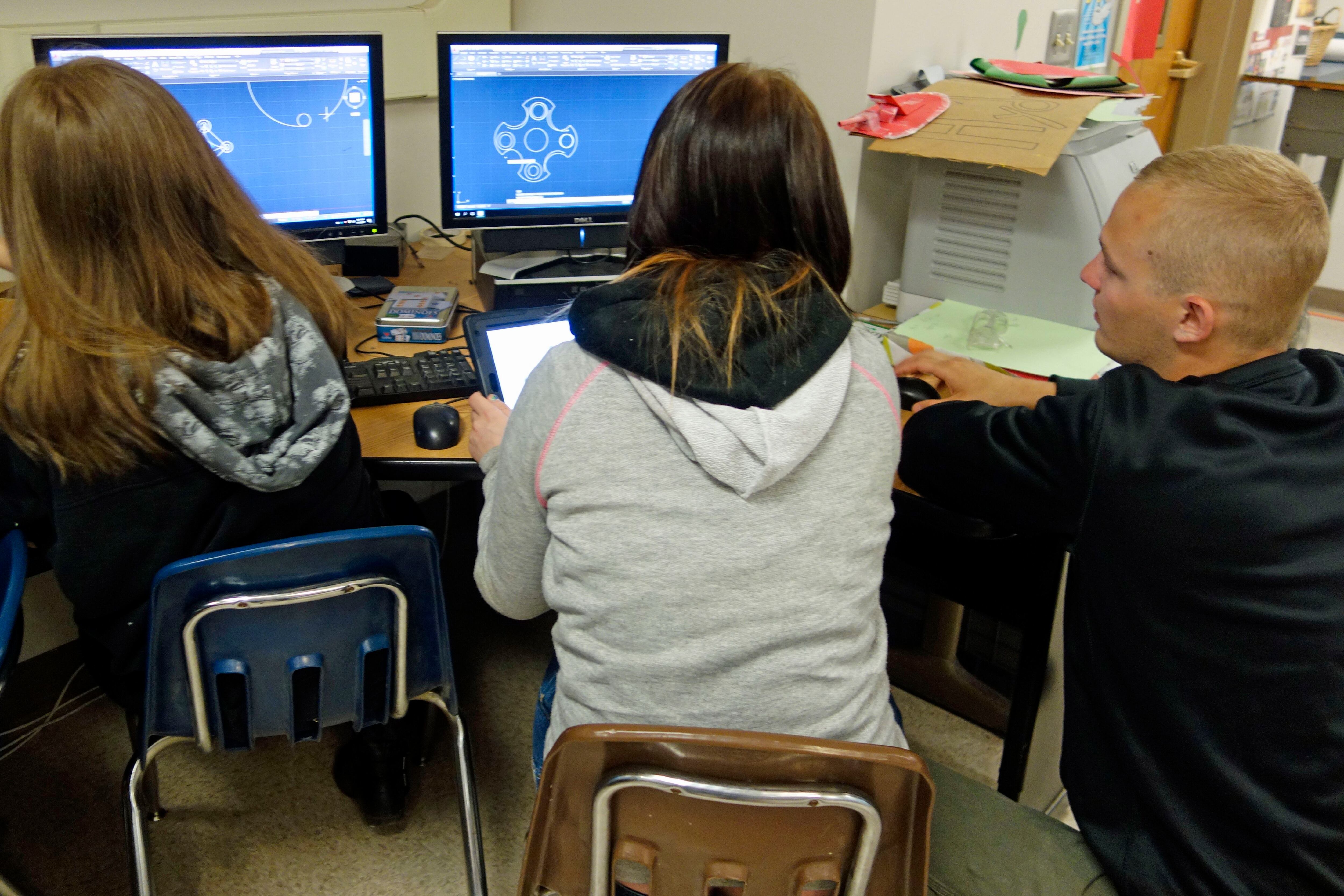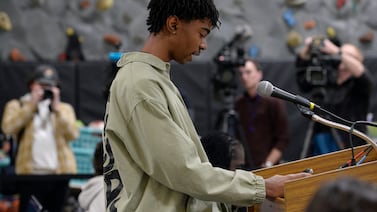High school students tutoring elementary school kids. College students working with middle schoolers. A corps of recent college graduates helping high school students. And an extra 30 minutes tacked on to the school day.
Brown University researchers say that’s how the U.S. could structure a nationwide program to help students recover from the academic disruption caused by the pandemic. Their blueprint, released Wednesday, lays out how millions of students could get access to small-group tutoring, a concept with a strong research backing.
Already, England and parts of Australia have launched tutoring programs of their own. The researchers say the idea could be worth trying here, too — though the practical challenges would be substantial, and the hefty price tag would make it a political longshot.
“The evidence for tutoring is among the most widespread and compelling evidence of an education intervention that is out there,” said Brown’s Matt Kraft, who authored the paper with Grace Falken. But, he warned, “Just saying ‘Let’s scale tutoring, it’s been shown to be effective in small trials’ is not a recipe of success.”
Evidence that students will need extra help is growing. Several new analyses, based on tests given to millions of students at the beginning of the school year, show that students started the year behind.
- On the NWEA MAP test, students dropped 5 to 10 percentile points in math.
- Similarly, students fell 7 points in math and 1 point in reading on an exam from the testing company Renaissance.
- On a third test, the i-Ready, the share of students far below grade level increased by several percentage points in elementary grades. This data was also described in a new McKinsey report, which emphasized that declines were particularly large in schools serving mostly students of color.
- On early reading tests, the share of first graders not hitting benchmarks jumped from 27% last year to 40% this year. Among second graders, it increased from 29% to 35%.
These results are better than the worst-case scenarios that some had projected. But they miss students who didn’t take the exams, perhaps because they are disconnected from school. They also don’t account for the impact of this school year, when many students, particularly students of color, are still learning virtually.
What’s widely agreed upon is that most students are behind where they would normally be, and many are probably going to fall further behind this year.
“These tangible learning losses have already occurred,” said Emma Dorn, an author of the McKinsey report. “There are evidence-based approaches that we can use, and we need to start thinking now about how we’re going to deploy those.”
That’s where the latest report comes in. Studies have shown that students make large academic gains when regularly tutored in small groups. That kind of tutoring can help students move from the 50th percentile to the 65th percentile of performance. Some research also shows tutoring boosts high school students’ grades and their chances of passing math class.
The blueprint for a new national program calls for tutoring to be done across a whole school and in small groups, with no more than four students per tutor. The tutoring should be frequent and happen during the school day, which should have a half hour added. And students should stick with the same tutor all year.
Using high school and current college students for the tutoring of younger students would keep costs down. Recent college graduates, as full-time AmeriCorps members, would work with high schoolers, and newly hired paraprofessionals would tutor students with significant disabilities.
The initiative would be funded and coordinated by the federal government, as Kraft says that, during an economic downturn, states and school districts won’t have the financial resources to get such a program off the ground on their own. But school districts would choose whether to participate and make key decisions like whether tutoring would be delivered in person or virtually. Staff members at each school would oversee day-to-day operations.
That all might seem straightforward, but if widely adopted, it would amount to an overhaul of American schooling.
“We’re asking schools to likely change how they organize the school day,” said Kraft. “We’re also talking about changing what we think of as the type of instruction that schools deliver.”
What would it cost? About $1,000 per student, or $50 billion if every public school child was tutored. It’s a staggering number, and close to what the federal government spends each year on K-12 education. The blueprint suggests targeting tutoring at the lowest-performing schools or high-poverty elementary schools to reduce costs.
Kraft is aware of the downsides of such an ambitious program.
“The immediate need, growing enthusiasm, and window of opportunity for a rapid expansion of tutoring could also imperil its potential longer-term success,” the paper says. “We face the risk of implementing tutoring in hasty and uneven ways due to a lack of coordination and system-wide capacity.”
Atlanta Public Schools’ expansion of tutoring in low-performing schools, starting in 2016, illustrates those potential pitfalls. A 2017 study found that tutors were hired late and turnover was high, an accompanying online curriculum was frequently difficult to log into, and tutors often didn’t coordinate with teachers, sometimes trying to pull students out of core academic classes.
“If you’re going to give a kid intervention in reading, you can’t pull them out of reading,” explained one Atlanta principal. “It became a burden.”
Tutor-to-student ratios in the Atlanta schools were also larger than in some of the studies showing tutoring’s benefits. Not surprisingly, researchers found no evidence that students benefited.
Kraft acknowledges that it’s unlikely that a national program would be as successful as the initiatives that have been studied to date. Tutor-to-pupil ratios would likely be higher, and it’s unclear whether virtual tutoring would work well and whether high school students would be effective tutors.
But a national program could still be worth a shot, Kraft says, even if the benefits are more modest.
“Tutoring is not a silver bullet,” the paper says, “but if we can scale even reasonably good tutoring with just half the average impact found in the research literature, that would meaningfully benefit students.”
The latest blueprint joins another proposal by the Center for American Progress, a progressive think tank, to add tutors and counselors through AmeriCorps. A bipartisan proposal to expand AmeriCorps has not yet gone anywhere in Congress, though, as wrangling continues over another stimulus package. Other advocates have promoted a different solution: simply giving parents money they could use for private tutoring.





